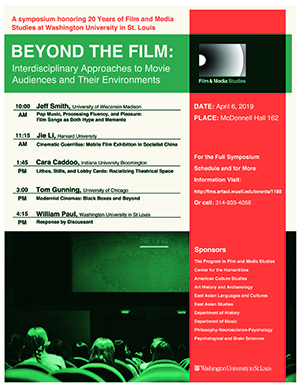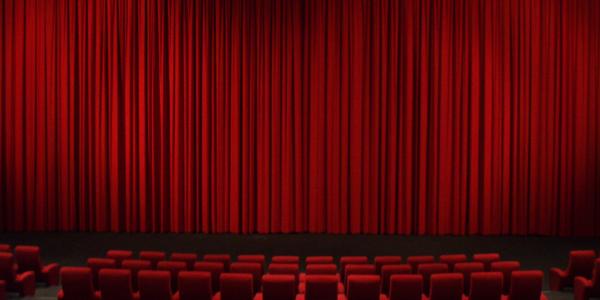Diane Wei Lewis is an assistant professor of film and media studies in the Film and Media Studies program.
In her book Envisioning Freedom: Cinema and the Building of Modern Black Life, Cara Caddoo explores the unexamined history of black film exhibition in turn-of-the-century America. Contrary to what many film historians have assumed, African-American film audiences did not first encounter moving images in white-owned and racially segregated commercial theaters in the 1910s. Rather, as early as 1897 — the year after Edison publically debuted his Vitascope system for projecting moving images — black lodges, churches, fraternal societies, women’s clubs, schools, and businesses organized early film screenings years before nickelodeons, the first spaces for regular film exhibition, appeared. Motivated by the philosophy of racial uplift, many black organizations used film screenings to educate, proselytize, politicize, and forge racial identity. Black congregations used film screenings to raise funds for the construction of ornate church buildings to celebrate the glory of God and to serve as symbols of race pride and respectability. Caddoo argues, “African Americans embraced the moving image before many of their white counterparts because it was suited to the needs and public spaces of modern black life.”

Caddoo’s work is an example of film scholarship that examines the broader connections between cinema and urban history, social history, capitalist modernity, and the politics of space. Interestingly, Caddoo argues that early-twentieth-century black exhibition practices confound how we usually imagine the boundaries between “public” and “private,” and trouble our association of “modernity” with the secular. She argues that African Americans turned to private institutions (and religious institutions in particular) to consolidate ideas of identity, community, culture, and racial progress when they were denied equal access to white-dominated public forums. Due to the different character of black screening spaces, black women played a greater role than white women in early film exhibition, since black exhibition spaces were imbued with respectable values of uplift — linked to sexual propriety, piety, temperance, industry, self-determination, and racial advancement — in contrast to the fairgrounds and commercial spaces where white audiences generally viewed films. Black film exhibition was closely intertwined with the creation of black institutions at both the local and national levels. By 1915, mass mobilization campaigns against D.W. Griffith’s The Birth of a Nation helped increase the NAACP’s membership twofold and created new alliances among existing community groups and the growing national civil rights movement.
On April 6, Caddoo will be speaking at Washington University in St. Louis along with three other preeminent film scholars at the symposium Beyond the Film: Interdisciplinary Approaches to Movie Audiences and Their Environments. The symposium marks the twentieth anniversary of Film and Media Studies at Washington University and showcases new approaches to the study of film exhibition. In studying film exhibition, scholars consider the physical space where films are screened, the social dimensions of film-going, the perceptual experience of cinema, and the historical contexts that make film consumption meaningful. Since film reception has social, cultural, aesthetic, economic, political, psychological, and technological dimensions, film exhibition can be explored from a variety of disciplinary perspectives. Beyond the Film presenters hail from a variety of scholarly backgrounds; their work demonstrates how histories and theories of film spectatorship can shed light on audience identities and historical issues, as well as the art and technology of cinema.
At the symposium, Jeff Smith (University of Wisconsin–Madison) will present new research that draws on sound studies, the history of technology, and cognitive psychology to analyze how American film and music cross-promotional campaigns relied on “exposure effect” and overlapped with the emergence of multichannel surround sound technologies. Jie Li (Harvard University) examines the neglected role of the mobile projectionist in bringing cinema to areas without electrification in socialist China, highlighting the importance of film screenings that took place outdoors and in other spaces besides movie theaters. Special guest Tom Gunning (University of Chicago) will speak on modernist theater design and “black box” theaters. Gunning is the author of more than one hundred publications. His pathbreaking scholarship is associated with the “historical turn” in film studies, which led to a radical rethinking of film historiography, including a reevaluation of early film practices that were formerly regarded as “primitive.” He is famous for his work on cinema and modernity, including his influential scholarship that historicizes film exhibition practices and the film spectator’s experience.
Following talks by Smith, Li, and Caddoo, William Paul, professor of film and media studies at Washington University, will offer a response. Paul’s most recent book, the award-winning When Movies Were Theater: Architecture, Exhibition, and the Evolution of American Film, examines the history of screening spaces and the influence of theater on film distribution and exhibition, from 1896 to the 1968 Cinerama premiere of 2001: A Space Odyssey.
Thumbnail photo: “Cinema sign” by ryaninc (CC BY 2.0)





